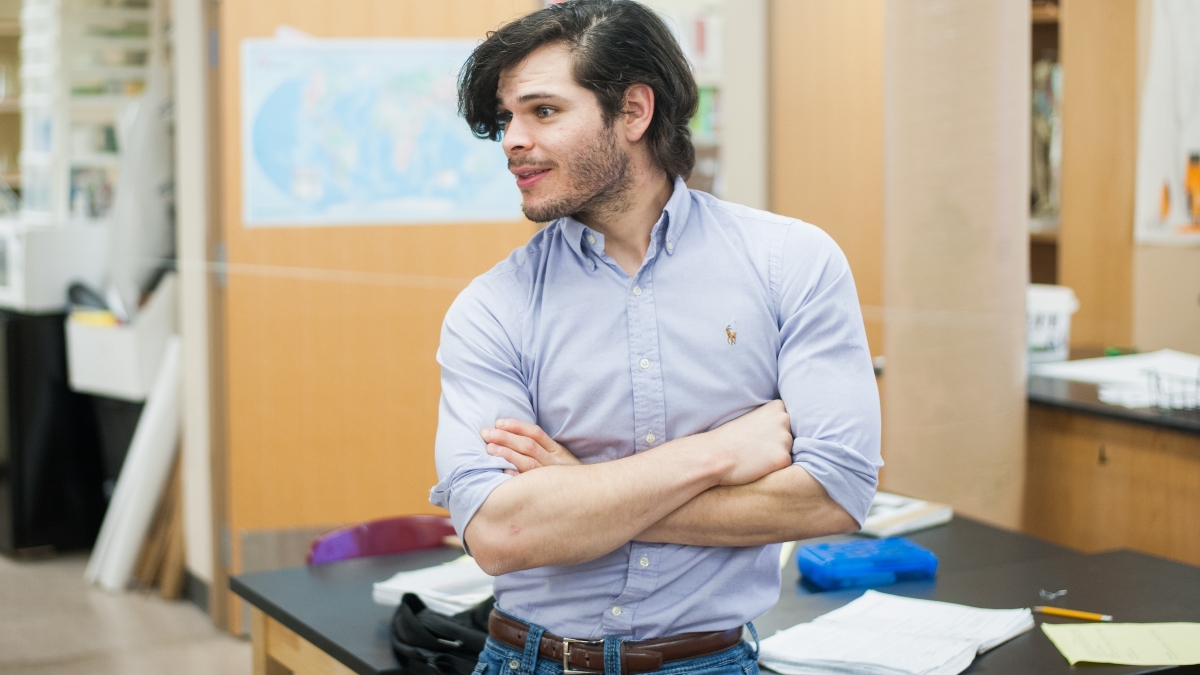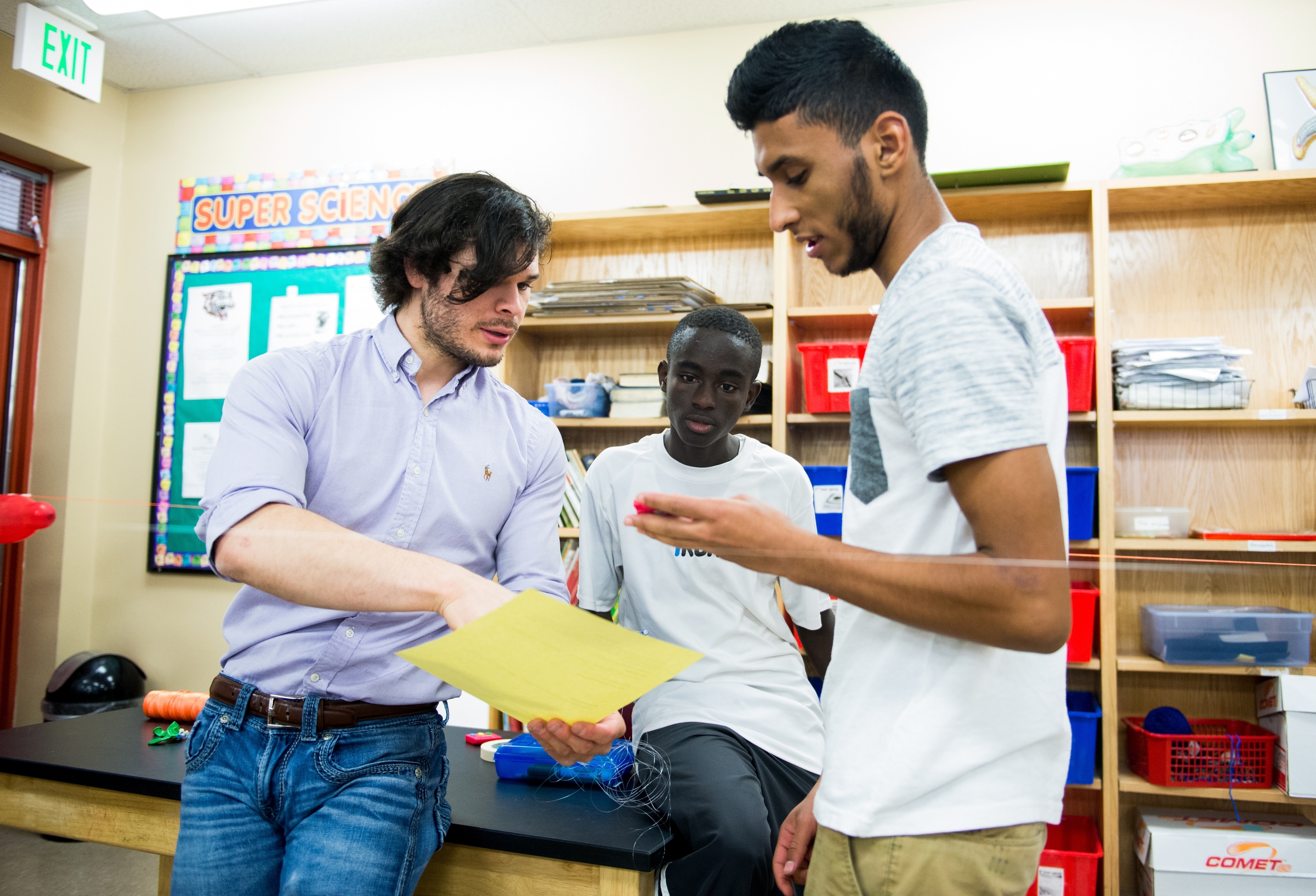Editor's note: This is part of a series of profiles for spring 2016 commencement. See the rest here.
Ulises Aragon feels a kinship with the students he has been teaching at Central High School in Phoenix for the past year.
Aragon is a pre-service teacher — a student at Arizona State University who is student-teaching before he graduates in May.
Aragon, a native Spanish speaker, learned to speak English while he was in elementary school, and now he’s teaching refugee students who are learning English in his environmental science class.
“It’s neat because you start to realize that you don’t need to speak perfect English to be innovative, and that’s one of the greatest things I learned with these kids,” said Aragon, who will graduate in May after majoring in secondary-education biological sciences at the Mary Lou Fulton Teachers College.
“I told the kids that I didn’t learn English until I was 12 years old, and I was afraid and people were making fun of me. We don’t want that kind of experience in our classrooms now.
“These are the students who come to school every day, they enjoy school, and given their backstories it’s amazing they can perform at such a level.”
Aragon answered some questions about his experience at ASU.
Student teacher Ulises Aragon (left) leads a lab in an environmental science class on April 22 at Central High School in Phoenix. Photos by Ben Moffat/ASU Now
Question: What was your “aha” moment, when you realized you wanted to study the field you majored in?
Answer: I started as a biomedical engineering major. My science teacher from Mountain Ridge High School asked me to come talk to his students while he was away and a substitute teacher was there.
So I got there and I was excited. I had my lesson plan. It was an hour and 15 minutes of me just talking. And the substitute told me that I lost the students in the first few minutes because it was just me talking. So I e-mailed my teacher, and he told me I had to make it about the kids.
So I revamped the lesson, went in and said about 10 words and turned it over to them. And I saw a diversity of viewpoints in these students that I never knew before.
Q: Why did you choose ASU?
A: I started at Glendale Community College and Phoenix College. For a while at ASU, when I changed my major, I was going to Scottsdale Community College and ASU at the same time. I also work 30 hours a week as a bartender.
Q: What are your plans after graduation?
A: I’ve been hired as a teacher at Camelback High School in Phoenix. I’ll be teaching a biology-chemistry program, and it’s a Montessori environment. To do that I’ll be going to Xavier University in Cincinnati this summer and taking classes on how I can implement Montessori concepts with biology.
Q: What’s something you learned while at ASU — in the classroom or otherwise — that surprised you or that changed your perspective?
A: An enlightening experience for me was witnessing the gamut of external environments that shape the trajectory of a student’s behavior, demeanor and involvement in school. I realized that the impact a supportive, disruptive, unruly and negligent home environment can have on a student will likely dictate subsequent success in school and life.
Q: What’s the best piece of advice you’d give to those still in school?
A: Learn of your students and learn from your students. Your students hold the key that will foster their success in school and your own success as their mentor, role model and teacher. Engage in understanding your students, their habits, interests, learning styles, cultures and in turn you will develop a process that will hold your own personal students and their preferences at the forefront of your lessons. That strategy will increase student engagement and content retention.
Q: What was your favorite spot on campus, whether for studying, meeting friends or just thinking about life?
A: Superstition is a trait that is endemic to my success as an ASU student. I found that the most tranquil and productive place for me was the third level of Hayden Library. Also, when I needed to practice my lectures, an empty room in the Farmer Education Building was a prominent location for me to deliver and analyze subsequent lessons.
Q: If someone gave you $40 million to solve one problem on our planet, what would you tackle?
A: I would try to integrate a mechanical, civil, electrical, biomedical and general engineering program in my school district. I feel that students in secondary education must be exposed to the creative, promising and engaging field that is engineering. Given the immense practicality of an engineering course, I feel that such programs would directly influence student attendance, performance and demeanor toward academics.
More Arts, humanities and education
ASU FIDM students to see their designs on the runway at Uncertainty Fashion Showcase
Nola Hill is perfecting every stitch of her fashion design collection, which she started conceptualizing last summer.She is among 30 ASU FIDM fashion design students who have been working late into…

ASU+GSV Summit brings experts together to discuss innovation in education
This week, Arizona State University President Michael Crow and other university leadership joined education and learning experts from around the globe at the ASU+GSV education technology summit in…

ASU professor's project helps students learn complex topics
One of Arizona State University’s top professors is using her signature research project to improve how college students learn science, technology, engineering, math and medicine.Micki Chi, who is a…



